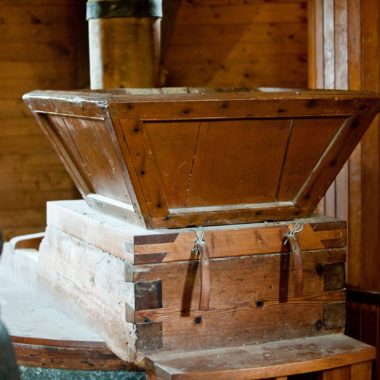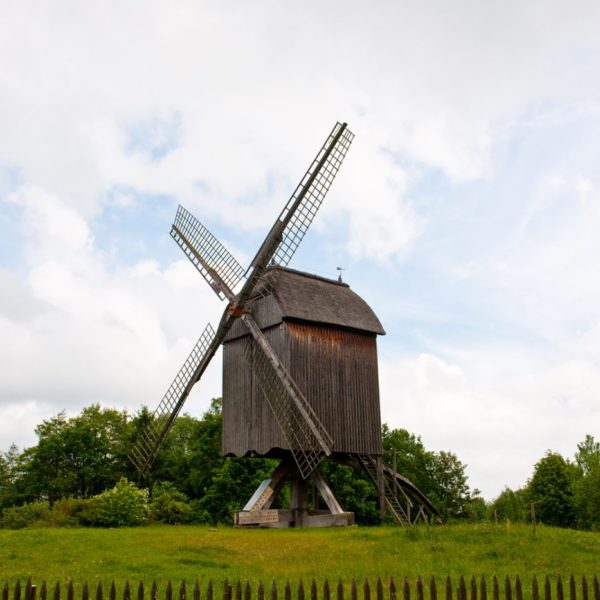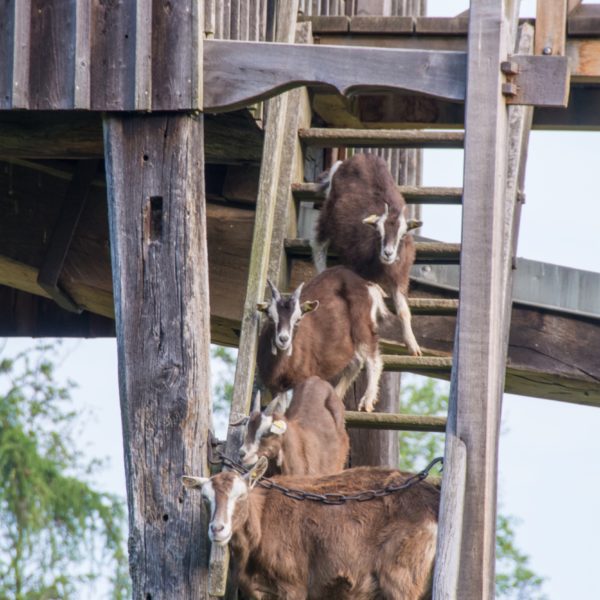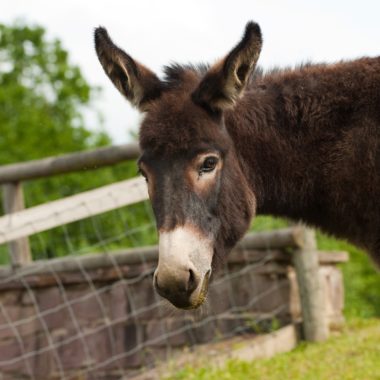
Papenhorst Post Mill from Alvesse

Built: 1869
Dismantled: 1986
Reassembled: 1987
In January 1868, the miller Carl Ludwig Boes from Abbensen applied to the authority of Meinersen (Lower Saxony) for permission to build a grain post mill with a single set of mill stones. He planned to erect the mill on a property he had bought in the Papenhorst district. Neighbouring millers and townships objected to Boes’ application but, in November, the bailiwick of Luneburg granted its permission for construction to start immediately. The master carpenter and millwright Ludwig Tiedt from Peine was contracted as the builder. The new mill went into operation already by the start of summer 1869.
As early as right after the First World War, the steady decline of mills in Germany began. The introduction of electric motors made the use of and dependence on water or wind energy unnecessary. Also, since the mill in Alvesse only had a single set of milling gear, even an electric motor would not have kept it economically competitive.
Carl Ludwig Boes’ heirs continued to operate the mill for commercial purposes, but only as a smaller side business alongside their farm. In 1958, the mill was closed down and began to fall into disrepair. The state of Lower Saxony listed both the building and its technology as sites of historic interest and in 1986 permitted it to be dismantled under the condition that it be reconstructed on the site of Hessenpark Open Air Museum.
The windmills at Hessenpark Open Air Museum cannot be rigged with sails permanently. The changing winds at their current locations do not allow for any extended operation. Only the Windmill from Borsfleth (Northern Hesse Ensemble, 5) is operated during the Mill Days to demonstrate the traditional techniques. At this event, the milling gear is run with an electric motor as was customary for the same type of mills from about 1900 onwards on windless days.



Mit dem Laden der Karte akzeptieren Sie die Datenschutzerklärung von Google.
Mehr erfahren




